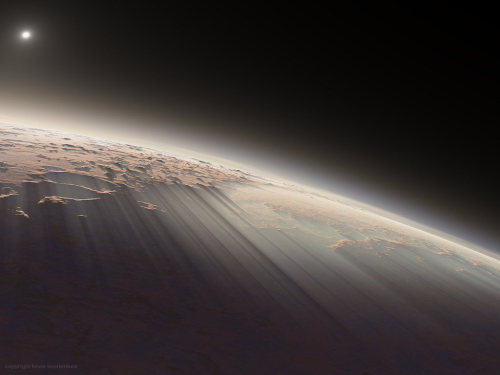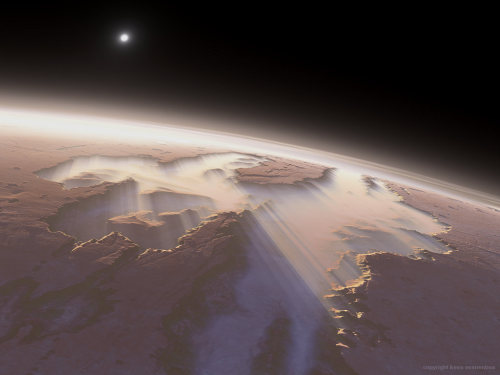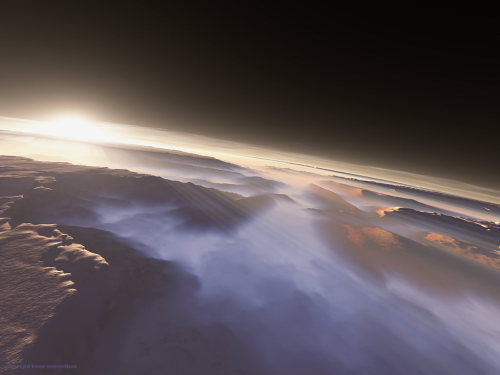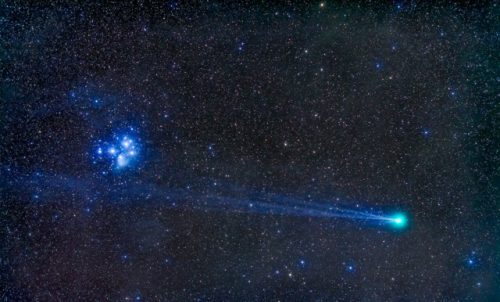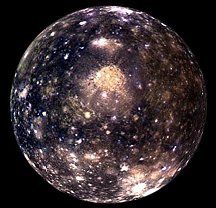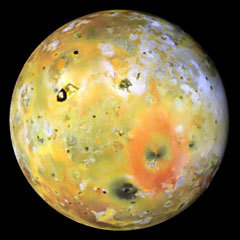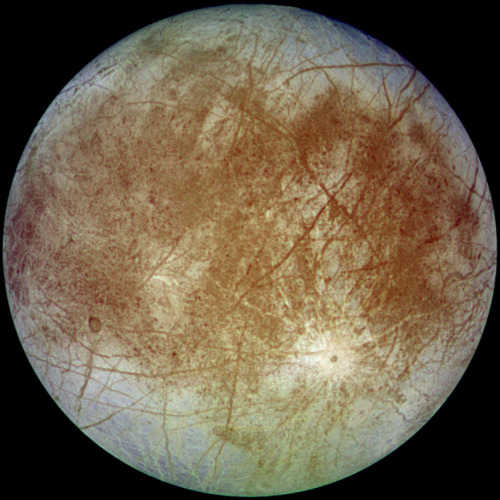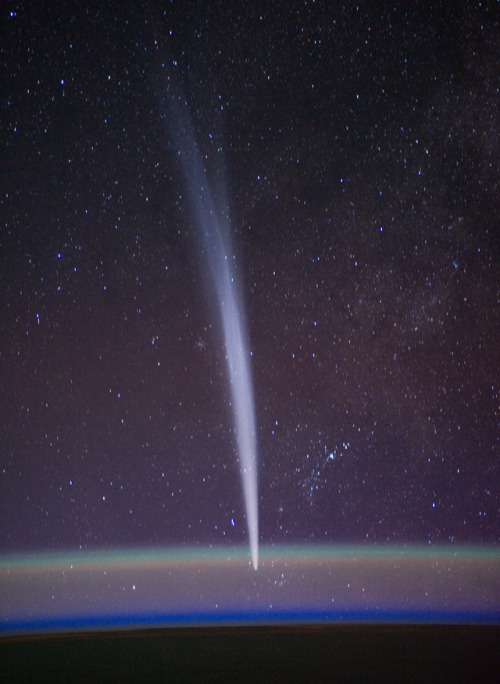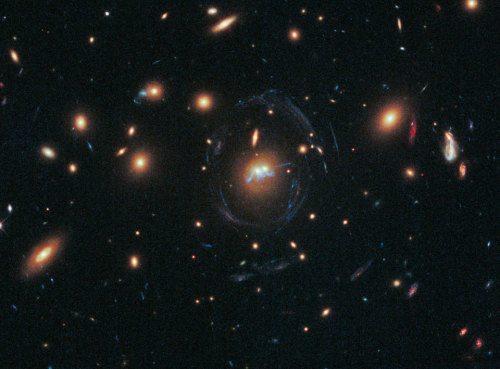159 posts
Latest Posts by xnzda - Page 3

Comas and Tails of Comets The generally unexpected and sometimes spectacular appearance of comets have triggered the interest of many people throughout history. A bright comet can easily be seen with the naked eye. Comets are usually not discovered until after a coma or tail has formed. Depending on the apparent size of the coma or tail, a comet can be very bright. Some comets have a tail extending more than 45˚ on the sky. The earliest records of comet observations date to ~6000BCE in China. The smaller nucleus (rocky body) of a comet, often only a few kilometres in diameter, is usually hidden from view by the large coma, a cloud of gas and dust roughly 10 to the power of 4-10 to the power of 5 km in diameter and not seen with the naked eye, a large hydrogen coma, between 1 and 10 million km in extent, which surrounds the nucleus and visible gas/dust coma. Two tails are often visible, both in the antisolar direction: a curved yellowish dust tail and a straight ion tail, usually of a blue colour. Comets are usually inert at large heliocentric distances and only develop a coma and tails when they get closer to the sun. When the sublimating gas evolves off the surface of a comet’s nucleus, dust is dragged along. The gas and dust form a comet’s coma and hide the nucleus from view. Most comets are discovered after the coma has formed when they are bright enough to be seen with relatively small telescopes. ~ JM Image Credit More Info: Comets, NASA Coma
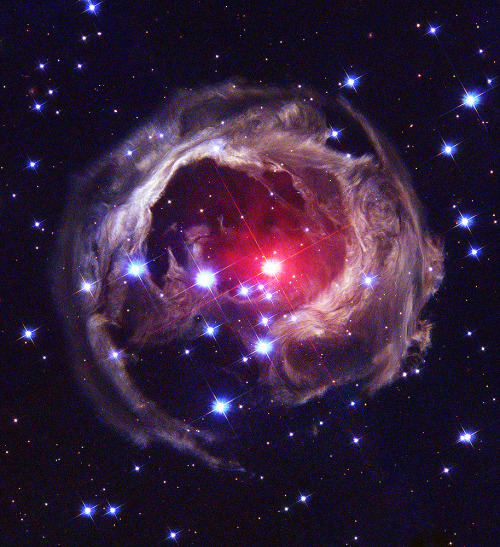
Light Echoes from V838 Mon
For reasons unknown, star V838 Mon’s outer surface suddenly greatly expanded with the result that it became the brightest star in the entire Milky Way Galaxy in January 2002. Then, just as suddenly, it faded. A stellar flash like this has never been seen before.
It’s true that supernovae and novae expel matter out into space. But while the V838 Mon flash appears to expel material into space, what is seen here is actually an outwardly moving light echo of the bright flash. In a light echo, light from the flash is reflected by successively more distant rings in the ambient interstellar dust that already surrounded the star.
V838 Mon lies about 20,000 light years away toward the constellation of Monoceros the unicorn. In this Hubble Space Telescope image from February 2004, the light echo is about six light years in diameter.
Image Credit: NASA, APOD, ESA, H. E. Bond (STScI)

The Spanish Dancer and her supernova by strongmanmike2002 on Flickr.

This Distant World May Be The First Ringed Planet Discovered Outside Our Solar System
Planet J1407b is 430 light years from Earth and 10-40 times the size of Jupiter. It’s too soon to tell if these truly are rings, but if they are…
Read More/Source
Stellar Winds
Stellar winds are fast moving flows of material (protons, electrons and atoms of heavier metals) that are ejected from stars. These winds are characterised by a continuous outflow of material moving at speeds anywhere between 20 and 2,000 km/s.
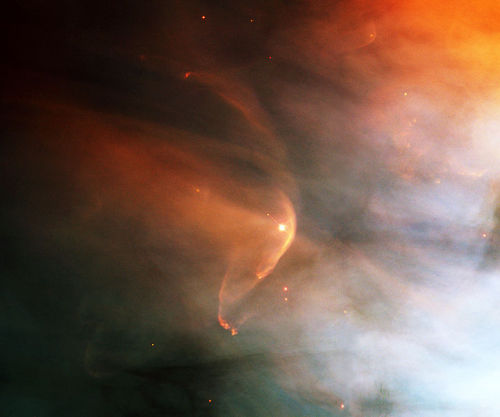
In the case of the Sun, the wind ‘blows’ at a speed of 200 to 300 km/s from quiet regions, and 700 km/s from coronal holes and active regions.

The causes, ejection rates and speeds of stellar winds vary with the mass of the star. In relatively cool, low-mass stars such as the Sun, the wind is caused by the extremely high temperature (millions of degrees Kelvin) of the corona.

his high temperature is thought to be the result of interactions between magnetic fields at the star’s surface, and gives the coronal gas sufficient energy to escape the gravitational attraction of the star as a wind. Stars of this type eject only a tiny fraction of their mass per year as a stellar wind (for example, only 1 part in 1014 of the Sun’s mass is ejected in this way each year), but this still represents losses of millions of tonnes of material each second. Even over their entire lifetime, stars like our Sun lose only a tiny fraction of 1% of their mass through stellar winds.

In contrast, hot, massive stars can produce stellar winds a billion times stronger than those of low-mass stars. Over their short lifetimes, they can eject many solar masses (perhaps up to 50% of their initial mass) of material in the form of 2,000 km/sec winds.

These stellar winds are driven directly by the radiation pressure from photons escaping the star. In some cases, high-mass stars can eject virtually all of their outer envelopes in winds. The result is a Wolf-Rayet star.

Stellar winds play an important part in the chemical evolution of the Universe, as they carry dust and metals back into the interstellar medium where they will be incorporated into the next generation of stars.
source (read more) + Wolf–Rayet star

Aurora and Manicouagan Crater from the Space Station : How many of these can you find in today’s featured photograph: an aurora, airglow, one of the oldest impact craters on the Earth, snow and ice, stars, city lights, and part of the International Space Station? Most of these can be identified by their distinctive colors. The aurora here appears green at the bottom, red at the top, and is visible across the left of image. Airglow appears orange and can be seen hovering over the curve of the Earth. The circular Manicouagan Crater in Canada, about 100 kilometers across and 200 million years old, is visible toward the lower right and is covered in white snow and ice. Stars, light in color, dot the dark background of space. City lights appear a bright yellow and dot the landscape. Finally, across the top, part of the International Space Station (ISS) appears mostly tan. The featured image was taken from the ISS in 2012. via NASA

M51: The Whirlpool Galaxy
Credit: NASA, ESA, S. Beckwith (STScI), and the Hubble Heritage Team (STScI/AURA)
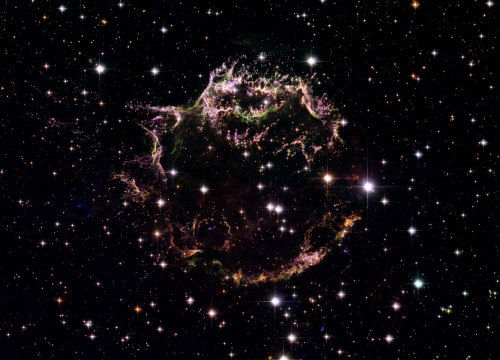
Remains of supernova explosion Cassiopeia A most recent supernova in Milky Way

NASA’s Most Shocking Image
This image is a 1.5… *BILLION* pixel photograph of the Andromeda Galaxy.
To view the image in all its glory go here.
NASA is the coolest thing that’s ever happened.

Hubble Finds an Einstein Ring : These graceful arcs are a cosmic phenomenon known as an Einstein ring - created as the light from distant galaxies warps around an extremely large mass, like a galaxy cluster. (via NASA)
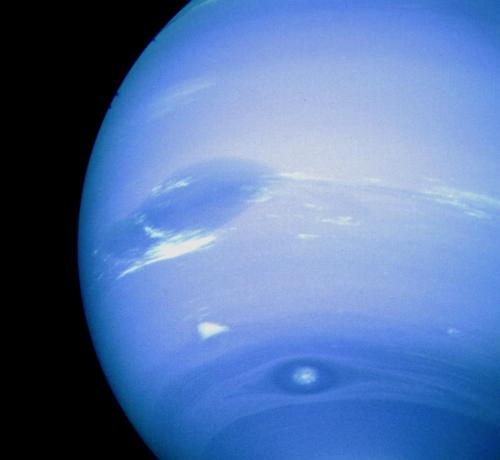
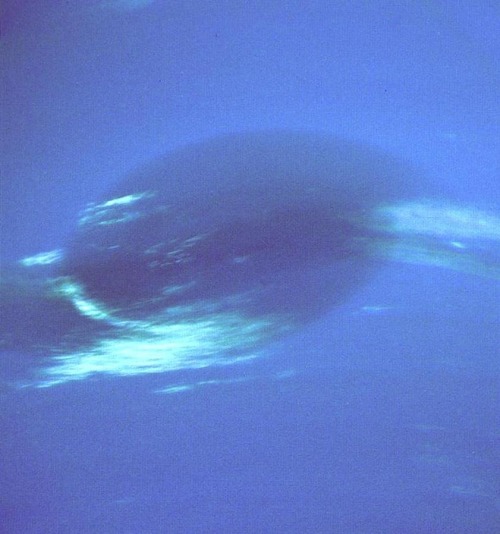
This photograph of Neptune was reconstructed from two images taken by Voyager 2’s narrow-angle camera, through the green and clear filters. At the north (top) is the Great Dark Spot, accompanied by bright, white clouds that undergo rapid changes in appearance.
Credit: NASA

Grand Spiral Galaxy - M 100
Known as a grand design spiral galaxy, M100 is a large galaxy of over 100 billion stars with spiral arms that are like our own Milky Way Galaxy. This Hubble Space Telescope image of M100 was made in 2009 and reveals bright blue star clusters and intricate winding dust lanes which are hallmarks of this class of galaxies. Studies of variable stars in M100 have played an important role in determining the size and age of the Universe.
Credit: NASA/APOD

Auroras Colorful Veil Over Earth : NASA astronaut Scott Kelly shared this photograph on social media, taken from the International Space Station on August 15, 2015. Kelly wrote, #Aurora trailing a colorful veil over Earth this morning. Good morning from @space_station! #YearInSpace
js

The Infrared Visible Andromeda: This remarkable synthetic color composite image was assembled from archives of visible light and infrared astronomy image data. The field of view spans the Andromeda Galaxy are also included in the frame. via NASA
js
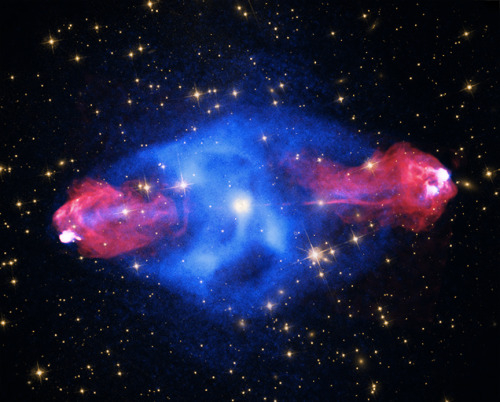
Light from Cygnus A: Celebrating astronomy in this International Year of Light, the detailed image reveals spectacular active galaxy Cygnus A in light across the electromagnetic spectrum. Incorporating X-ray data extends to either side along the same axis for nearly 300,000 light-years powered by jets of relativistic particles emanating from the galaxys central supermassive black hole. Hot spots likely mark the ends of the jets impacting surrounding cool, dense material. Confined to yellow hues, optical wavelength data of the galaxy from Hubble and the surrounding field in the Digital Sky Survey complete a remarkable multiwavelength view. via NASA
js

